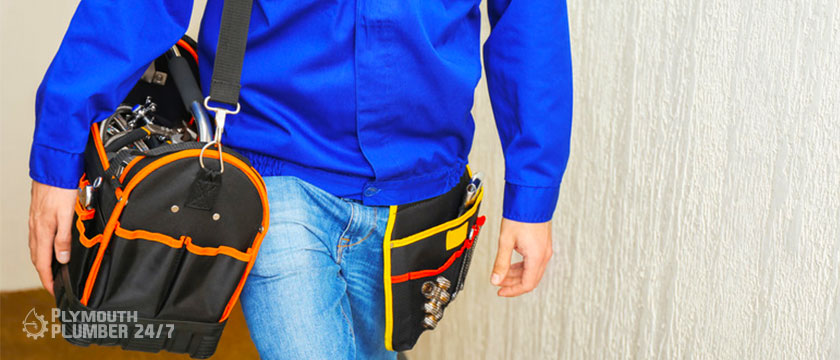-

email us
[email protected]
-

call us now
01752 741574
Plymouth Plumber has vaccinated and ready team for emergency requests..

11 Dec. 2021
Practical How to Open a Clogged Sink at Home?
If you’ve noticed that standing water in your tub or your kitchen sink is slowly draining, you likely have a clogged drain. Fortunately, if this condition is detected early, you can clear a clogged drain using common household items and cleaning agents. Vinegar, baking soda, borax, and lots of hot water are simple but effective tools for cleaning slow-running sinks. If you can not solve it by yourself, you can always call our 7/24 open plumbing and heating plymouth services.
Chapter 1
How to Open a Sink Clogged with Vinegar at Home?
Preparation of Drainage Mixture
Drain the water from the sink or boiler. If it’s draining really slowly, it may take some time, but if you drain the water yourself, the drain cleaning mixture will work on the clog much faster.
Gather house cleaning/kitchen items. You have several options for creating a non-commercial expense opener. Most contain vinegar and another substance that, when combined, creates a chemical reaction. See if you have any of these expense openers on hand:
Vinegar (white or apple cider vinegar work) is the acidic base to create a foaming reaction.
Lemon juice is acidic, like vinegar, but smells refreshing. This makes lemon juice a good option for cleaning clogged kitchen sinks.
Baking soda is often used as an all-purpose cleaner.
The salt will help clear the congestion.
Pour the vinegar and another drain opener through the drain. There is no need to stir before pouring the drain. The mixture will foam up on its own as the chemical reaction takes place.
For a vinegar and baking soda combination: Use 1/2 cup baking soda and 1/2 cup white vinegar.
For the lemon juice and baking soda combination: Use 1 cup of baking soda and 1 cup of lemon juice.
For the salt, borax, and vinegar combination: Use 1/4 cup borax, 1/4 cup salt, and 1/2 cup vinegar.
Chapter 2
Clogging the Congestion
Cover and let the mixture sit. Use the tub plug to close the drain or cover with a steaming cloth. Keep the drain closed for 30 minutes. During this time, the foam will try to wear away the blockage.
Dip in the drain. Use a small sink size pump to agitate the clogged material. Create a seal and press the rubber base of the pump up and down.
The plunge is best if you fill the reservoir or are submerged with water. The added pressure from the water allows the blockage to open.
Use a sling to remove the blockage. If the drain is clogged with hair, take a metal hanger and twist it until you get a long piece of metal with a small hook at one end. Carefully feed the hook end of the wire down the drain. Twist the wire and try to close the blockage. Gently pull the wire back after catching the clog.
Be careful not to scratch your sink or tub with exposed metal. Also, be careful when undoing the hanger. Metal can be sharp.
Use a drain snake. A draining snake looks like a long metal string. You will need to carefully feed the snake into the sewer. If the snake gets stuck, you want to twist the cable. This will keep it clogged. As you slowly pull the snake back, the obstruction should be cleared. Wash with water and repeat.
Use work gloves as the metal snake can be sharp. You should also have an old towel and ladle to set the clogged material.
Chapter 3
Washing the Sewer
Flush the drain with hot water. Boil at least 6 cups of hot water or several kettles. Open the drain and slowly pour the hot water down.
If there are plastic pipes, use only very hot water. Avoid pouring boiling water into the drain.
Repeat. If the water still flows slowly, repeat the process until the drain is clear.
If the clog still stubbornly resists draining, you may have a stuck hairball. This may require manual removal of the blockage. Consider calling a plumber, especially if the drain stops completely.
Use gravity and pressure to clear the drain. This works best on a clogged tub because you can fill the tub with gallons of water. Fill the tub with hot water. Then open the drain and let the pressure of all that water help break up the clog.
- By:Plymouth Plumber
- Comments:No Comments
- 1
- 2
